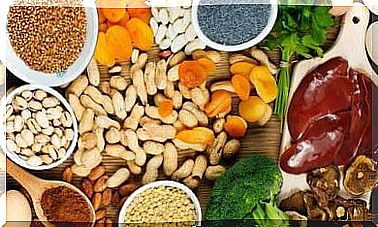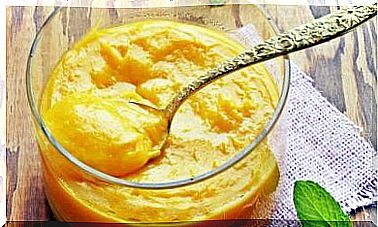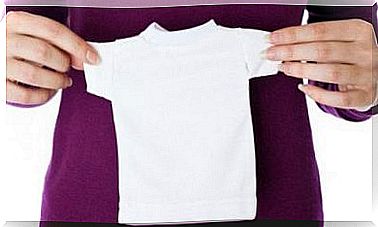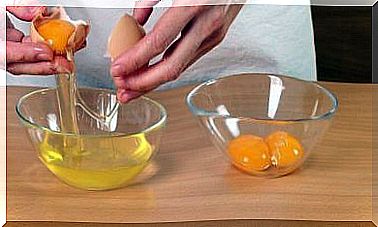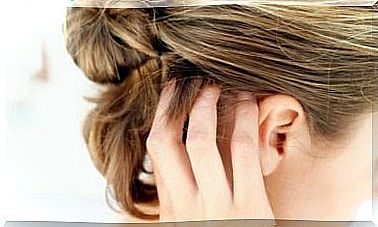What To Eat For Normal Hemoglobin Levels

In order not to suffer from anemia, it is necessary to maintain normal levels of hemoglobin in the blood. So there are foods that can help us get all the nutrients we need.
Below, we’ll go into more details of some healthy options, but first let’s talk about this protein so vital to the body’s functioning.
What is hemoglobin?
Hemoglobin is a protein found inside red blood cells. Its function is to transport oxygen from the lungs to the tissues and carbon dioxide (CO2) from the tissues to the lungs.
Hemoglobin levels are different in men and women. In adult men, normal levels are 13.8 or 14 g/dl, whereas in women they are 12.1 or 15 g/dl. When a woman is pregnant, hemoglobin levels should be at or above 11.0 g/dl
Also, in children, values vary according to age. In them, it is very important that hemoglobin levels are adequate for their good growth:
- Children from 6 months to 4 years: 11 g/dl
- From 5 to 12 years: 11.5 g/dl
- From 12 to 15 years old: 12.0 g/dl or more
Hemoglobin and anemia
Hemoglobin is the most valuable reference for diagnosing anemia. When its values are below the established parameters, we speak of anemia. Furthermore, the lack of this protein is related to the lack of iron. Therefore, low hemoglobin levels can mean iron deficiency anemia (lack of iron).
On the other hand, hemoglobin is the substance that gives the blood red color. As its function is important to the body, its levels must be kept stable.
To know and control hemoglobin levels, a blood count is performed, which allows you to measure all blood components. But beware! It’s also not good to get high levels of hemoglobin, as this can cause serious damage.
Hemoglobin levels depend on good nutrition as well as regular exercise. However, these aren’t the only factors that can change your levels.
What happens when the level is low?

When hemoglobin is low, something is not right with your health. Therefore, it is common for people to feel discomfort and some difficulty in carrying out their routine. Among the most common causes are the following:
- Anemia.
- Radiotherapy.
- Intense menstruation.
- Leukemia and other cancers.
- Iron deficit (from iron deficiency anemia). This can be due to poor absorption of iron or inadequate nutrition.
Symptoms presented by people with low hemoglobin
- Fatigue.
- Dizziness.
- Weakness.
- Tiredness.
- Pale skin.
- Chills.
- Hypersomnia.
- Irritability.
- Headache.
- Weight loss.
- Irregular heart rate.
- Difficulty breathing.
- Difficulty concentrating.
What happens when hemoglobin levels are high?
When we have high levels of hemoglobin, we must be alert as it could be an indication of another pathology. Below are some of the possible causes:
- Meningitis.
- Smoking.
- Dehydration.
- Heart problems.
- Brain tumors.
- Lung problems.
- Use of some medications.
- Apoplexy, which causes a cerebral infarction or stroke.
Symptoms presented by people with high hemoglobin

- Dizziness.
- Itching.
- Itching, burning.
- Abdominal pain.
- Excessive bleeding.
- Inflammation of the spleen.
- Difficulty breathing.
- Coagulation problems.
- Changes in skin color.
What should we eat to reach normal levels?

A balanced diet is able to provide the body with all the nutrients it needs to stay healthy. However, when the body does not have enough iron, it takes it from other sources. Therefore, the production of hemoglobin decreases. In these cases, the consumption of foods rich in iron and other nutrients is usually recommended, as we will see below.
1 – Iron-rich foods
- Liver.
- Spinach.
- Legumes.
- Seafood.
- Red meat.
- Oilseeds (almonds).
- Vegetables, especially those with a dark green tone.
2 – Foods that provide folic acid
- Seeds.
- Nuts.
- Broccoli.
- Spinach.
- Asparagus.
- Peanut.
- Bovine liver.
- Black bean.
- Wheat germ.
- Fortified cereals.
3 – Foods containing vitamin C
Vitamin C facilitates the absorption of iron in the body. It is in fruits and vegetables:
- Cabbage.
- Strawberry.
- Broccoli.
- Mango.
- Orange.
- Chili.
- Spinach.
- Tangerine.
4 – Foods that contain vitamin B-12
- Animal products.
- Fortified cereals.
Juices to increase hemoglobin
In the popular sphere they say that it is recommended to consume certain natural drinks (juices and juices, mainly) to maintain good hemoglobin levels. Some of the most common options are citrus juice (orange, lemon, etc.) and beetroot juice.
- The vitamin C contained in citrus fruits facilitates the absorption of iron in the body. For this reason, juices from these particular fruits are recommended.
- On the other hand, beetroot juice is recommended for being a food that provides a certain amount of potassium, proteins, fiber and folates.
Herbs to Increase Hemoglobin Levels
According to popular beliefs, some herbs can be included in the diet to increase hemoglobin. Some of the most recommended are:
- Dandelion: You can consume the flowers in salads or in the form of tea.
- Fennel: good when hemoglobin is low from blood loss. Grind the seeds and use them as a seasoning.
- Nettle: contains iron and vitamins. So it is a good food to increase hemoglobin. You can consume the leaves in salads.
Foods That Change Hemoglobin Levels
Not all foods are good for maintaining an adequate hemoglobin level. Avoid foods and beverages that can inhibit iron absorption, such as: soda, tea, parsley, milk, coffee and foods rich in calcium and fiber. On the other hand, consumption of antacids should also be avoided.
For sensitive people, gluten can damage the lining of the small intestine, making it difficult to absorb nutrients such as iron and folic acid, among others.
Ask your doctor what foods you should exclude from your diet and what foods you may occasionally eat. At the same time, maintain a balanced diet and enjoy all its health benefits.
